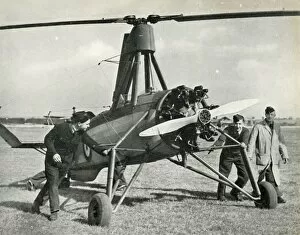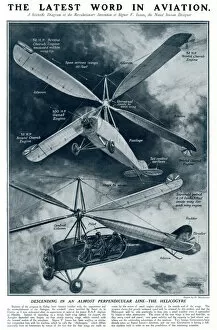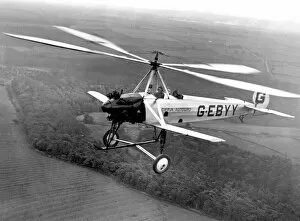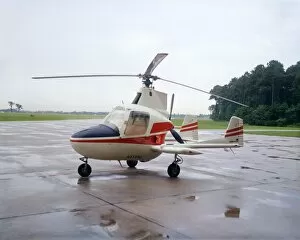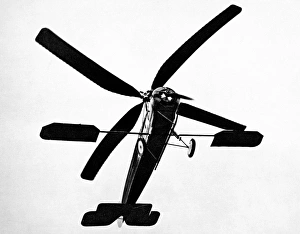Autogiro Collection
The autogiro, a remarkable invention in aviation history, has left an indelible mark on the world of flight
All Professionally Made to Order for Quick Shipping
The autogiro, a remarkable invention in aviation history, has left an indelible mark on the world of flight. Wing Commander Kenneth Horatio Wallis MBE showcased its incredible capabilities at the prestigious Brooklands Flying Display. The skies above Hamble, Hampshire witnessed the awe-inspiring sight aircraft gracefully soaring through the air. One iconic image captures our imagination - The Cierva Autogiro from 1941, its creator unknown but its impact undeniable. This early helicopter, known as G-ACIN, paved the way for future advancements in vertical flight. In 1928, Spanish engineer Juan de la Cierva introduced his groundbreaking creation - the Cierva C. 8W (C. 8L Mk. IV) autogiro. It was hailed as the latest word in aviation and revolutionized aerial transportation forever. Amongst these pioneering designs was also Weir W-2 and Windmill Plane; both pushing boundaries and challenging conventional notions of flight. A glimpse into history reveals a solution to urban transport problems with aeroplanes that required no aerodromes - a concept ahead of its time dating back to c1935. As we delve deeper into this captivating era of aviation innovation, it becomes evident that Juan de la Cierva's vision transcended borders. His autogiro design captivated minds worldwide and left an enduring legacy within the industry. One such testament is seen through The Cierva C8L autogyro's journey from Cramlington to Glasgow – a feat that exemplified not only technological prowess but also human determination. The story of "autogiro" encompasses tales of daring pilots defying gravity and engineers pushing limits beyond imagination. It represents an era where dreams took flight against all odds – leaving us inspired by their audacity even today.


